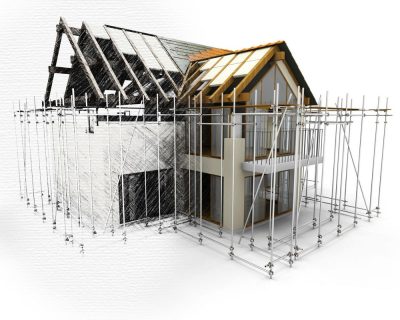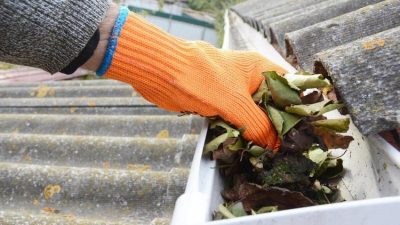
Have you ever questioned why your kitchen continues to retain the fish fry aroma from last night? Have you ever questioned why your smoke alarm activates each time you prepare a meal? Your kitchen ventilation system which is located above your stove might be causing your kitchen problems.
The purpose of clean kitchen ventilation extends beyond simply eliminating food odors from the air. Maintaining a kitchen ventilation system is essential for safety, efficiency, and health in your kitchen space. Despite its importance, kitchen ventilation remains one of the most neglected parts of kitchen maintenance.
This article covers all necessary information to maintain your kitchen ventilation system by explaining its importance and offering practical cleaning advice while also instructing you on when to hire professional kitchen duct cleaning services.
What’s Inside:
- Why Kitchen Ventilation Matters
- Signs Your Ventilation System Needs Cleaning
- DIY Cleaning Tips for Home Kitchen Ventilation
- Commercial Kitchen Ventilation: Special Considerations
- When to Call the Professionals
- UK Regulations You Should Know
- Maintenance Schedule: Keeping Track
Why Kitchen Ventilation Matters
Your kitchen ventilation system functions to eliminate cooking odors and perform additional critical tasks. The kitchen ventilation system operates as an essential safety mechanism within your kitchen environment.
- Removes airborne grease particles
- Eliminates excess moisture
- Extracts harmful combustion products
- Reduces carbon monoxide levels
- Improves indoor air quality
Between 2025 and 2035 analysts project the UK commercial kitchen ventilation system market will grow steadily at a compound annual growth rate of 3.8%. Significant investments for modernizing restaurant infrastructure coupled with the implementation of energy-efficient ventilation systems drive this market growth.
But why the growing interest? Because proper ventilation directly impacts:
Fire Safety: The accumulation of grease inside ducts presents a high fire risk since it serves as one of the major reasons kitchen fires start.
Health: Proper ventilation is essential because cooking fumes with particulate matter and nitrogen dioxide create respiratory problems when present in the air.
Energy Efficiency: A system that is kept clean operates more effectively by reducing energy consumption which leads to financial savings.
Food Quality: Improved air circulation reduces food smell contamination while enhancing cooking environment quality.
Signs Your Ventilation System Needs Cleaning
What signs should you look for to determine when your ventilation system needs maintenance? Watch out for these telltale signs:
- The hood shows visible grease droplets both on its surface and around its perimeter.
- Decreased suction power
- Unusual noises coming from the fan
- Persistent cooking odors that don’t dissipate
- Sticky residue on kitchen surfaces
- Hood filters that look clogged or discolored
- Increased indoor humidity levels
The appearance of these signs indicates that your ventilation system needs cleaning. You need to perform regular maintenance even if you don’t observe these clear symptoms.
DIY Cleaning Tips for Home Kitchen Ventilation
Home kitchen ventilation systems maintain their efficiency through regular DIY cleaning until professional maintenance is needed. Here’s a simple step-by-step approach:
1. Hood Filters
- Take off the filters after confirming that the hood has been turned off and adequately cooled down.
- Place them in hot water mixed with degreasing dish soap.
- Incorporate baking soda or vinegar into the soaking solution to break down stubborn grease.
- Scrub gently with a non-abrasive brush
- Rinse thoroughly and dry completely before reinstalling
2. Hood Surface
- Clean the exterior using warm water mixed with soap.
- Apply a specific cleaner designed for stainless steel to prevent streaks on stainless steel hoods.
- Inspect corners and crevices since they collect grease easily
3. Fan Blades
- If accessible, carefully wipe down fan blades
- When cleaning fan blades use a degreaser that is formulated for kitchen applications.
- Before starting this procedure make certain the power supply remains entirely disconnected.
4. Duct Openings
- Wipe around visible duct openings
- Never spray cleaners directly into ducts
Remember: DIY cleaning efforts must be limited to parts that are easily reachable. The internal ductwork requires professional attention.
Commercial Kitchen Ventilation: Special Considerations
The ventilation systems used in commercial kitchens need to address specific operational challenges. The UK food service market grows annually by 3% while more than 40% of consumers dine out weekly which leads to unprecedented demands on commercial kitchen ventilation systems.
Commercial systems require:
- More frequent cleaning
- Compliance with stricter regulations
- Special attention to high-volume grease buildup
- Professional inspection and maintenance
For kitchens that operate between 6 and 12 hours each day, such as pubs and smaller restaurants, cleaning kitchen ventilation systems should be scheduled every six months to ensure they function optimally and safely.
When to Call the Professionals
Professional kitchen duct cleaning services provide essential support for tasks beyond surface-level maintenance.
- The internal ductwork system
- The external extraction fan
- Hard-to-reach components
- Thorough degreasing of the entire system
- Compliance certification (especially for commercial kitchens)
Professional cleaners have specialized equipment that can:
- Access the entire duct system
- Apply industrial-strength degreasers safely
- Remove accumulated grease buildup completely
- Examine the system for possible fire risks or operational failures
- Provide documentation for insurance and compliance purposes
UK Regulations You Should Know
In UK commercial kitchens kitchen ventilation cleaning frequently becomes a legal obligation rather than just an advisable practice.
Maintaining kitchen ventilation systems through regular cleaning ensures fire safety and meets UK regulatory requirements including the Regulatory Reform (Fire Safety) Order 2005. The Building Engineering Services Association (BESA) establishes industry standards through the TR19 Grease specification which outlines cleaning frequencies and methods to minimize fire hazards and uphold hygiene in commercial kitchens.
The regulations protect against kitchen fires which can become disasters while proper maintenance helps lower this threat.
Homeowners should be aware that although cleaning domestic kitchen ventilation systems isn’t legally mandated they should still perform reasonable maintenance to meet home insurance policy standards.
Maintenance Schedule: Keeping Track
Develop a cleaning schedule that corresponds to your kitchen usage patterns for optimal performance and safety.
For Home Kitchens:
- Hood filters: Monthly
- Hood surface: Weekly
- Accessible fan parts: Every 3 months
- Professional duct cleaning should occur once per year but increase in frequency for environments with heavy cooking.
For Commercial Kitchens:
- Hood filters: Weekly or bi-weekly
- Hood surface: Daily
- Accessible fan parts: Monthly
- Professional duct cleaning should occur every 3 to 6 months based on how much cooking you do.
A cleaning log helps maintain records of essential tasks while ensuring that no maintenance activity is forgotten.
Eco-Friendly Considerations
Modern kitchen ventilation systems serve essential safety functions but also support environmental sustainability. UK food service operations are directing more attention towards carbon neutrality and sustainability which drives the implementation of green ventilation technologies like quiet operation filtration systems and energy-saving heat recovery systems.
When maintaining your ventilation system, consider:
- Using eco-friendly cleaning products
- Checking for energy efficiency
- Investigate heat recovery systems that recycle thermal energy from extracted air to improve energy efficiency.
- Regular maintenance to ensure optimal energy usage
Quick Tips for Effective Cleaning
Follow these quick tips whenever you clean your ventilation system:
- Power must be turned off before cleaning any part of the ventilation system.
- Begin cleaning at the top and work downwards to prevent cleaning areas from becoming contaminated again
- Protect yourself from cleaning solutions and grease by wearing protective gear.
- Filters should be fully dry before reinstallation.
- Use a maintenance log to monitor your cleaning schedule.
Wrapping It All Up
Maintaining a clean kitchen ventilation system enhances safety standards while promoting health and operational efficiency. Home cooks and commercial kitchens need regular maintenance to prevent fires and improve air quality while extending equipment lifespan.
DIY cleaning maintains kitchen surfaces but professional cleaning of kitchen ducts achieves complete safety and regulatory compliance particularly in commercial kitchens.
A consistent cleaning routine and professional assistance when needed will keep your kitchen ventilation system functioning properly to protect your kitchen space and all its occupants. Proactive maintenance saves money because it prevents costly emergency repairs and system breakdowns.








